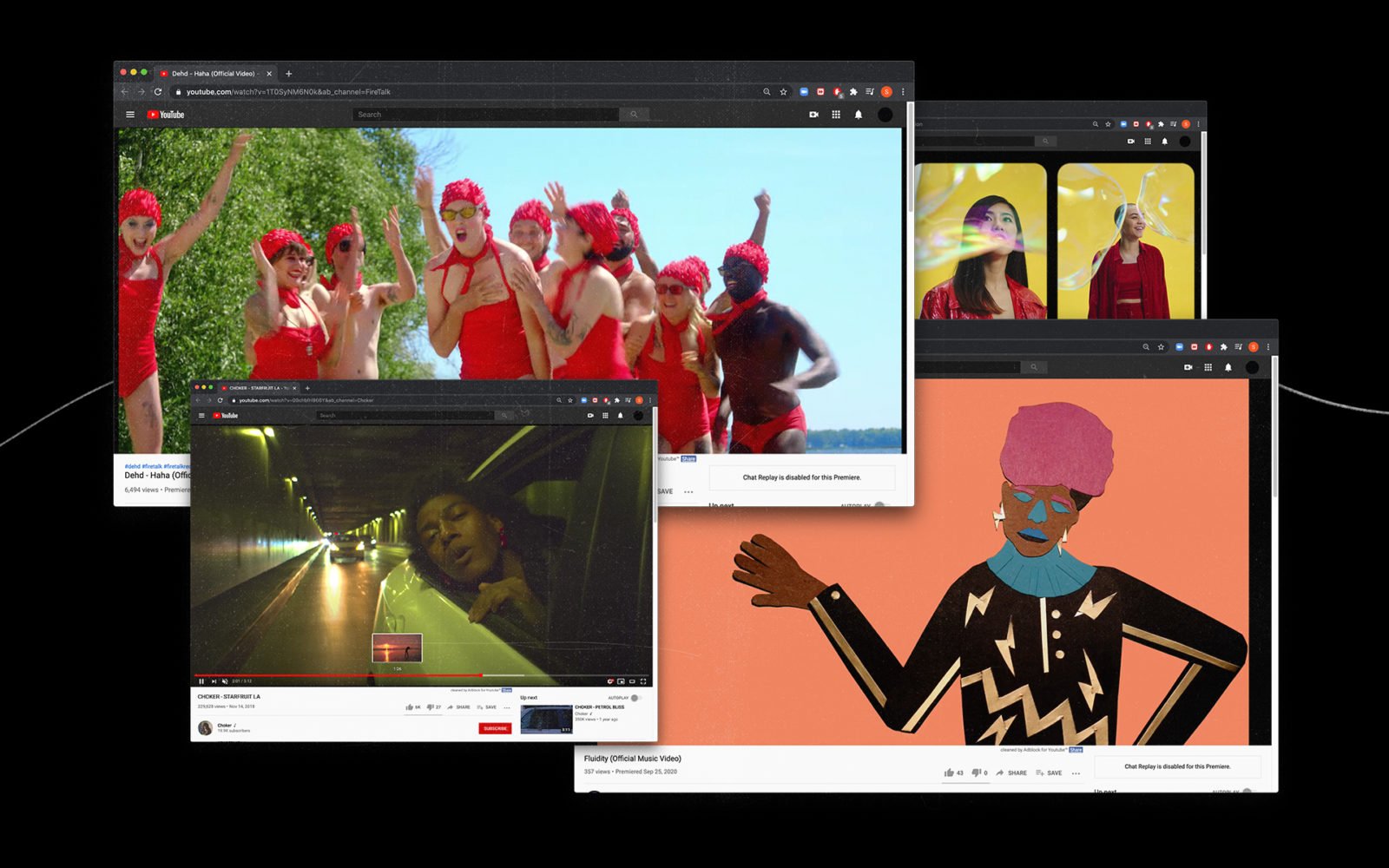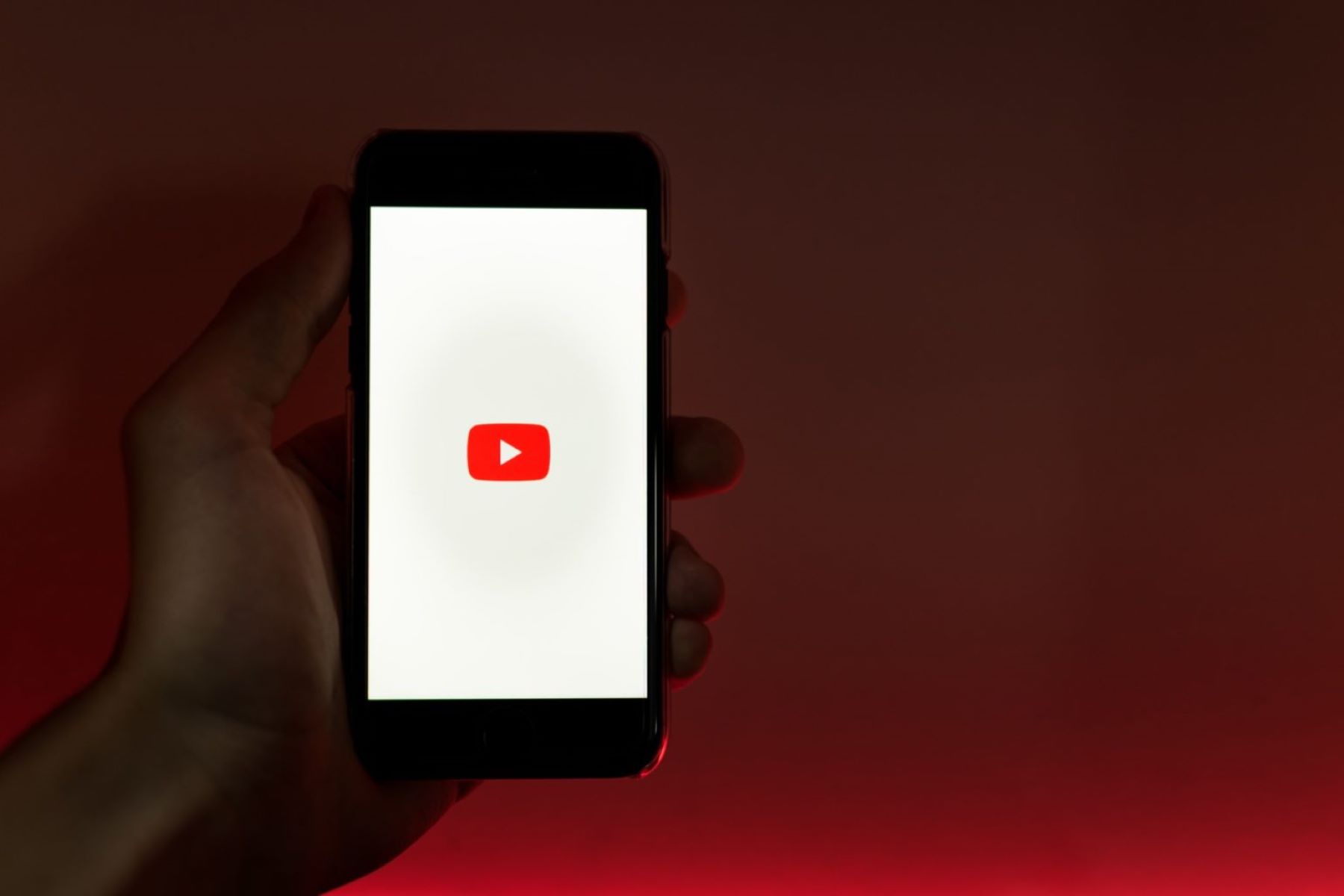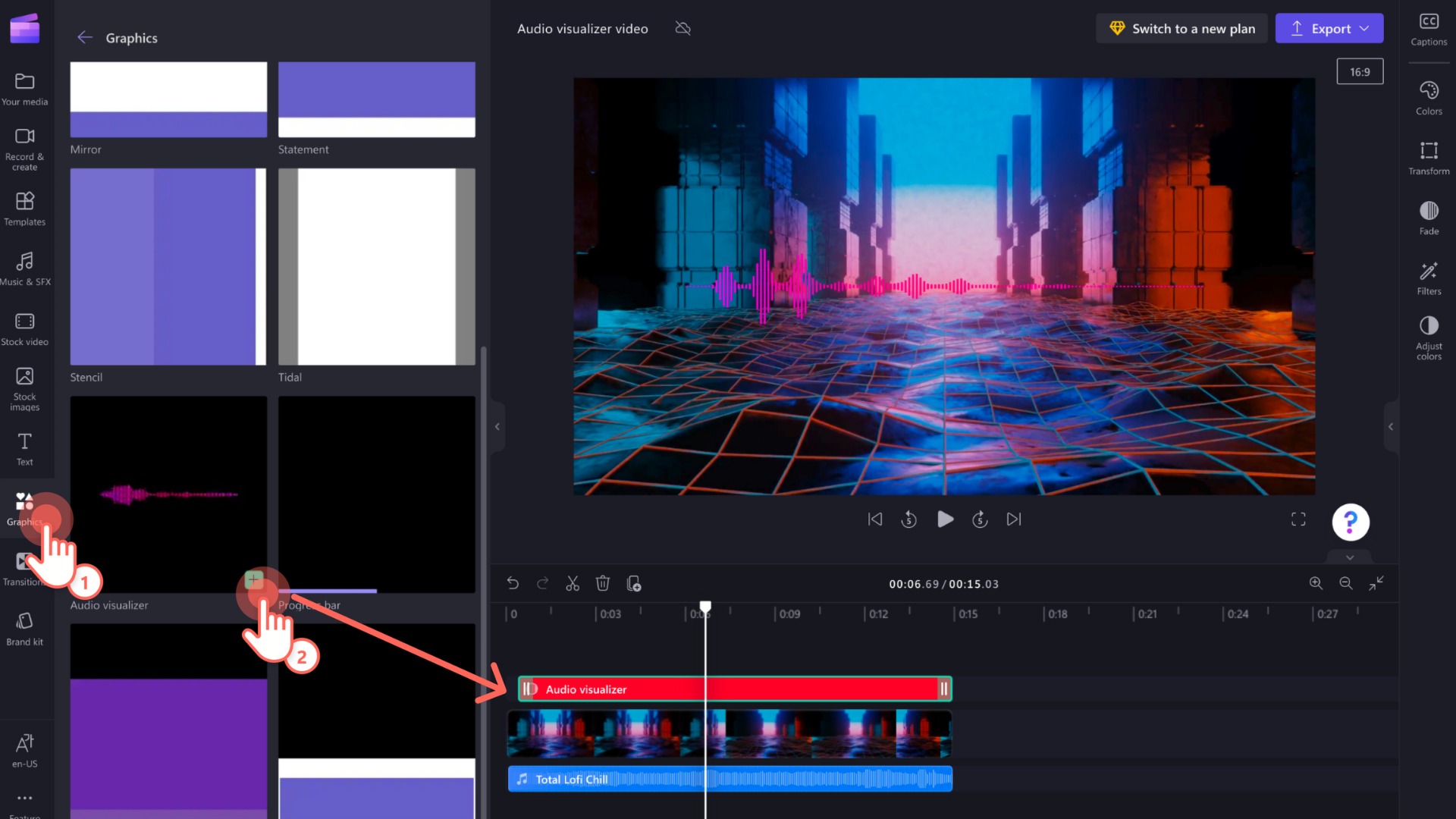Home>Production & Technology>Music Video>How Much Does A Music Video Make On YouTube


Music Video
How Much Does A Music Video Make On YouTube
Published: November 20, 2023
Find out how much money music videos can earn on YouTube. Learn about the potential income for music videos and the factors that influence their earnings.
(Many of the links in this article redirect to a specific reviewed product. Your purchase of these products through affiliate links helps to generate commission for AudioLover.com, at no extra cost. Learn more)
Table of Contents
Introduction
Music videos have become a cultural phenomenon in the digital age, with platforms like YouTube becoming the go-to destination for music lovers. YouTube not only offers a vast library of music videos for consumers to enjoy, but it has also become a lucrative platform for artists and content creators to monetize their work.
In this article, we will delve into the world of music video earnings on YouTube. We will explore the factors that influence revenue generation, understand YouTube’s monetization policies, calculate potential income, and examine case studies of successful music videos. Additionally, we will provide valuable tips on how artists and content creators can maximize their revenue from music videos on YouTube.
YouTube, with its massive user base and global reach, has revolutionized the music industry. It has provided a platform for emerging artists to gain exposure and established artists to interact directly with their fans. However, the big question on everyone’s mind is: How much money can a music video make on YouTube?
Before we dive into the specifics, it’s essential to understand how YouTube revenue works. YouTube’s revenue model is primarily based on advertising. Content creators, including music video producers, can earn money through advertisements that appear on their videos. The revenue generated is a result of various factors, such as the number of views, ad engagement, and the type of ads being displayed.
YouTube uses an algorithm to determine how much revenue a video can generate. This algorithm takes into account factors like video length, viewer engagement, and the demographics of the audience. The higher the engagement and the more ads viewed, the greater the potential earnings.
It is important to note that the amount of money a music video can make on YouTube can vary significantly. Factors such as the popularity of the artist, the quality of the video, the target audience, and the marketing efforts all play a crucial role in determining the overall earnings.
In the next sections, we will explore the factors that influence music video earnings, understand YouTube’s monetization policies, calculate potential income, examine case studies of successful music videos, and provide valuable tips to maximize revenue on YouTube.
Understanding YouTube Revenue
YouTube revenue is primarily generated through advertising. As a video hosting platform, YouTube displays ads before, during, and after videos. Content creators, including music video producers, receive a share of the revenue generated from these ads.
The amount of revenue earned from ads on YouTube varies based on several factors. These include the number of ad impressions, viewer engagement with the ads, the type of ads displayed, and the overall number of views on the video. Higher engagement and more ad views generally lead to higher revenue.
YouTube offers different types of ads, including skippable video ads, non-skippable video ads, display ads, and overlay ads. Each of these ad formats has its own payment structure. For example, with skippable video ads, content creators earn revenue when viewers watch at least 30 seconds of the ad or the full ad if it is shorter than 30 seconds. Non-skippable video ads, on the other hand, typically generate higher earnings but may lead to a higher audience drop-off.
In addition to ads, YouTube also has other revenue streams. These include YouTube Premium, where subscribers pay a monthly fee to access content ad-free, and channel memberships where viewers can support creators through monthly subscriptions.
It’s worth noting that YouTube retains a portion of the ad revenue as its share for providing the platform and services. The exact percentage varies depending on the specific terms and agreements between YouTube and the content creator.
As an artist or music video producer, it is crucial to understand the revenue model and how it applies to your videos. By understanding how different factors influence revenue, you can strategize and optimize your content to maximize earnings on YouTube.
In the next sections, we will explore the various factors that can influence music video earnings on YouTube, including viewership, ad engagement, target demographics, and more. By gaining a thorough understanding of these factors, you can make informed decisions and take steps to increase your music video’s revenue potential on YouTube.
Factors Influencing Music Video Earnings
Several factors play a significant role in influencing the earnings of a music video on YouTube. Understanding these factors is essential for artists and content creators to optimize their revenue potential. Let’s explore some of the key factors:
- Number of Views: The number of views a music video receives is one of the primary drivers of revenue. Generally, the more views a video has, the higher the potential earnings. However, it’s important to note that views alone do not directly translate to revenue. Factors like viewer engagement and ad impressions also contribute to earnings.
- Viewer Engagement: Viewer engagement refers to how viewers interact with a music video. Higher engagement, such as likes, comments, shares, and subscriptions, indicates an active and interested audience. YouTube’s algorithm takes viewer engagement into account when determining the visibility of a video and its potential for generating revenue.
- Ad Engagement: Ad engagement is another critical factor in music video earnings. If viewers actively engage with the ads displayed during the video, such as watching them in their entirety or clicking on them, it can lead to higher revenue. Encouraging viewers to interact with the ads, without being intrusive, can positively impact earnings.
- Ad Types and Advertisers: The type of ads displayed on a music video can affect revenue. Some ad formats, like non-skippable video ads, generally generate higher earnings per view but can result in higher audience drop-off. The nature of the advertisers can also influence earnings, as some industries may pay higher rates for ad placements compared to others.
- Target Demographics: The demographics of the audience who watches a music video can impact earnings. Advertisers may have specific target demographics, and if your video aligns with those demographics, it can attract higher-paying ads and generate more revenue.
- Video Length: The length of a music video can affect both viewership and revenue. Longer videos may result in higher viewer drop-off, while shorter videos may have fewer ad opportunities. It’s important to strike a balance and create compelling content that keeps viewers engaged while allowing for sufficient ad placements.
- Seasonality and Trends: The timing of a music video’s release can influence its earnings. Seasonal trends, cultural events, or viral sensations can impact viewership and ad rates. Keeping an eye on trends and strategically releasing music videos during opportune moments can potentially boost earnings.
While these factors can significantly influence music video earnings on YouTube, it’s important to remember that creating high-quality, engaging content remains paramount. By understanding these factors and leveraging them effectively, artists and content creators can optimize their revenue potential and establish a successful presence in the world of music videos on YouTube.
YouTube Monetization Policies
YouTube has specific monetization policies in place to ensure fair and ethical revenue generation for content creators. Understanding these policies is crucial for music video producers looking to monetize their content on the platform. Let’s take a closer look at some of these policies:
- Adherence to YouTube Partner Program: To monetize videos on YouTube, content creators must join the YouTube Partner Program (YPP). YPP eligibility requires meeting specific criteria, including a minimum of 1,000 subscribers and 4,000 watch hours in the past 12 months. Demonstrating compliance with YouTube’s community guidelines and policies is also essential.
- YouTube Advertiser-Friendly Guidelines: YouTube has guidelines to ensure that content is advertiser-friendly. Music videos must adhere to these guidelines to be eligible for monetization. Violating these guidelines, such as featuring inappropriate or copyrighted content, can result in demonetization or removal of the video.
- Content Ownership and Copyright: As a music video producer, it’s essential to have the necessary rights and permissions for all copyrighted content used in your videos. Unauthorized use of copyrighted material, including music tracks, can result in copyright claims and potential monetization issues.
- Age-Restricted Content: YouTube imposes age restrictions on certain types of content that may not be suitable for all audiences. Music videos containing explicit language, violence, or adult themes may be age-restricted, impacting ad visibility and potential earnings.
- Content ID and Royalties: YouTube’s Content ID system scans videos for copyrighted audio and visual content. If a music video contains copyrighted music, the rights holder may choose to monetize the video by placing ads on it. In such cases, the music video producer may still receive a portion of the revenue generated through Content ID.
- AdSense Account and Payment Threshold: Content creators must link their YouTube channels to an AdSense account to receive earnings. YouTube has a payment threshold that must be reached before any payments are made. The threshold amount varies by country and is subject to change.
- Channel Monetization Reviews: YouTube periodically reviews channels participating in the YPP to ensure compliance with their monetization policies. If a channel violates these policies, it may be temporarily or permanently demonetized, impacting the earning potential of the associated music videos.
It’s crucial to stay updated with YouTube’s monetization policies as they may evolve over time. By adhering to these policies and guidelines, music video producers can create a monetization-friendly environment for their content and maintain a sustainable revenue stream from YouTube.
Calculating Music Video Income on YouTube
Calculating the income from a music video on YouTube involves considering various factors like views, engagement, ad types, and revenue shares. While the exact formula for calculating earnings is not publicly disclosed by YouTube, we can explore some key considerations:
1. Views and Revenue per Thousand Views (RPM): The primary factor in determining income is the number of views a music video receives. YouTube pays content creators based on the RPM, which represents the estimated revenue generated for every thousand views. RPM can vary widely depending on factors like the audience demographics, ad engagement, and the type of ads being displayed.
2. Ad Types and Ad Engagement: Different ad formats have varying payment structures. For example, non-skippable video ads may have a higher payment rate than skippable ones. Additionally, viewer engagement with ads, such as watching them in their entirety or clicking on them, can lead to higher revenue for content creators.
3. Revenue Share: YouTube retains a portion of the ad revenue as its share for providing the platform and services. The exact revenue share percentage is not publicly disclosed but typically ranges from 45% to 55% for content creators participating in the YouTube Partner Program.
4. Channel Memberships and YouTube Premium: If a music video is part of a channel that offers memberships or is watched by YouTube Premium subscribers, additional revenue streams may come into play.
5. Content ID Revenue: If a music video contains copyrighted audio content, the rights holder may choose to monetize it through Content ID. In such cases, the music video producer may receive a portion of the revenue generated by ads placed on the video.
While it is challenging to provide an exact calculation for music video income on YouTube without access to specific data, an estimate can be derived based on these factors. It’s important to keep in mind that the income from a music video can fluctuate over time as views, engagement, and ad rates change.
Furthermore, other variables, such as fluctuating ad rates, different payment structures for various countries, and seasonality, can also impact earnings. Monitoring performance analytics and staying informed about YouTube’s policies and updates can help content creators gain valuable insights into their music video’s income potential on the platform.
Case Studies: Successful Music Videos’ Earnings
Examining case studies of successful music videos can provide insights into the earning potential on YouTube. While the exact earnings for specific videos may not be publicly disclosed, we can look at notable examples to understand the scope of income generation. Here are a few case studies:
1. “Despacito” by Luis Fonsi and Daddy Yankee: The music video for “Despacito” became an international sensation, surpassing the record for the most-watched video on YouTube at one point. With billions of views, it is estimated to have generated significant revenue through ad impressions and engagement. Moreover, the widespread popularity of the song likely led to additional revenue from other monetization avenues like streaming and royalties.
2. “Gangnam Style” by Psy: “Gangnam Style” went viral on YouTube and became the first video to surpass one billion views on the platform. Its massive global success translated into substantial earnings through ad revenue and other monetization opportunities. The catchy song and iconic dance moves garnered attention from viewers worldwide, leading to increased engagement and ad rates.
3. “Hello” by Adele: Adele’s heartfelt ballad “Hello” generated billions of views on YouTube. The emotional impact of the song, combined with Adele’s powerful vocals, resonated with audiences, resulting in high viewer engagement and ad revenue. Its popularity on the platform contributed to its overall success, both artistically and financially.
4. “Shape of You” by Ed Sheeran: Ed Sheeran’s “Shape of You” amassed billions of views on YouTube. The energetic track and relatable lyrics attracted a wide audience, leading to significant ad revenue for the music video. In addition, the song’s popularity on streaming platforms and radio likely contributed to its overall earnings.
It’s important to note that these case studies represent exceptional success stories, and the earnings of music videos can vary greatly. Factors such as the artist’s popularity, the marketing efforts, the timing of the release, and the video’s quality and appeal all contribute to the overall income generated on YouTube.
While it’s challenging to estimate the exact earnings from a music video on YouTube, the success of these case studies showcases the potential for substantial revenue. It highlights the importance of creating compelling content that resonates with viewers and employing effective promotional strategies to maximize visibility and engagement.
Tips for Maximizing Music Video Revenue on YouTube
Maximizing revenue from music videos on YouTube requires a strategic approach. Here are some essential tips to help content creators optimize their earnings on the platform:
- Create High-Quality Content: Investing in high-quality production values and engaging storytelling can enhance the appeal of your music video. Quality content is more likely to attract viewers, increase engagement, and lead to higher revenue.
- Promote Your Music Video: Building an audience and generating views is crucial for revenue generation. Utilize social media platforms, collaborate with influencers, and leverage your existing fan base to promote your music video and drive traffic to YouTube.
- Optimize Metadata and Titles: Utilize relevant keywords and tags in your video metadata to improve discoverability. Craft compelling titles and descriptions that accurately represent your music video and capture the interest of potential viewers.
- Encourage Viewer Engagement: Actively engage with your viewers by replying to comments, encouraging likes and shares, and creating a sense of community around your music video. Higher viewer engagement can lead to increased ad views and revenue.
- Collaborate with Other Artists: Collaborating with other artists can expand your audience and reach, exposing your music video to their fan base. This cross-promotion can lead to increased views and engagement, ultimately boosting revenue.
- Stay Consistent and Regular: Regularly releasing new music videos and staying consistent with your content schedule helps build loyal viewership. Consistency fosters audience engagement and increases the chances of higher revenue on YouTube.
- Understand Your Audience: Analyze YouTube’s analytics to gain insights into your audience demographics, viewing behavior, and engagement patterns. Tailor your future content to cater to their preferences, increasing the likelihood of ad engagement and revenue.
- Utilize YouTube Monetization Features: Explore all the monetization options available on YouTube, such as channel memberships, Super Chat, or YouTube Premium exclusivity. These features provide additional revenue streams and support for your music video.
- Keep Up with YouTube Updates and Policies: Stay informed about YouTube’s evolving policies, guidelines, and algorithm updates. This ensures that you remain compliant with monetization requirements and can adapt your strategies to optimize revenue generation.
- Diversify Your Revenue Streams: While YouTube ad revenue is a significant income source, diversify your revenue streams by exploring other avenues like streaming platforms, merchandise sales, live performances, and collaborations with brands or sponsors.
Remember, maximizing revenue from music videos on YouTube is a gradual process that requires persistence, creativity, and adaptability. By implementing these tips and continually refining your approach based on audience feedback and performance data, you can enhance your music video’s revenue potential on YouTube.
Conclusion
Music videos on YouTube present a significant opportunity for artists and content creators to not only showcase their talent but also generate revenue. Understanding the factors that influence music video earnings, YouTube’s monetization policies, and implementing effective strategies are key to maximizing revenue potential on the platform.
Factors such as views, viewer engagement, ad types, and target demographics all play a crucial role in determining the income generated from music videos on YouTube. By creating high-quality content, promoting videos, optimizing metadata, and encouraging viewer engagement, content creators can increase their chances of higher ad revenue.
It is important to comply with YouTube’s monetization policies, join the YouTube Partner Program, and maintain adherence to advertiser-friendly guidelines. By doing so, content creators can ensure their music videos remain eligible for monetization and avoid any potential demonetization issues.
While case studies of successful music videos provide insights into the impressive earnings that can be achieved, it is important to note that individual results may vary. Various factors, including artist popularity, marketing efforts, timing, and video quality, contribute to the success and revenue potential of music videos on YouTube.
By staying consistent, understanding your audience, utilizing YouTube’s monetization features, and diversifying revenue streams beyond ad revenue, content creators can create a sustainable and lucrative presence on YouTube.
In conclusion, with the right strategies, creativity, and dedication, music videos on YouTube have the potential to not only entertain and engage audiences but also generate a substantial income for artists and content creators. By continuously innovating and adapting to the dynamic landscape of YouTube, content creators can unlock the full revenue potential of their music videos on the platform.











